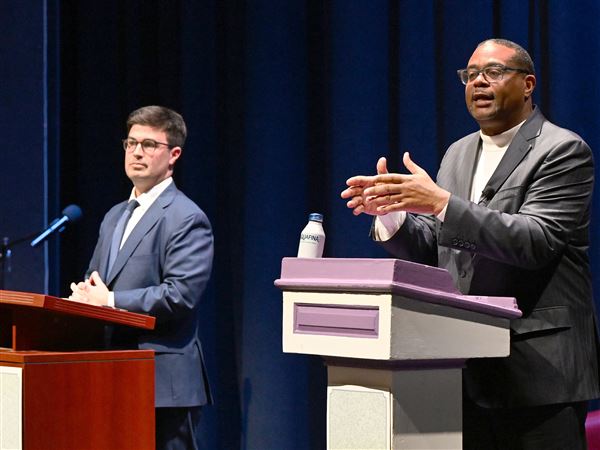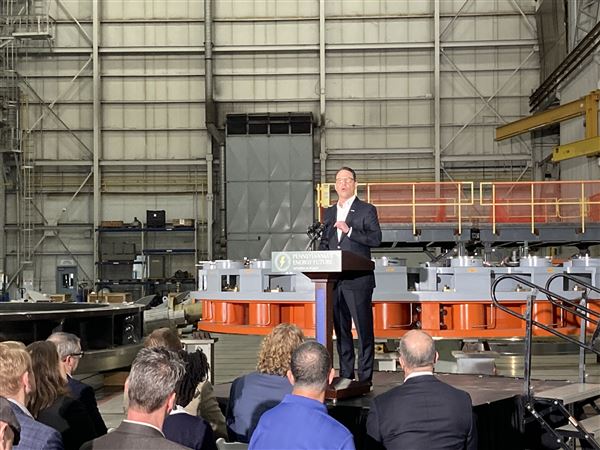The Obama administration’s decision to pay doctors for coordinating the treatment of chronically ill Medicare patients could mean hundreds of thousands a year in new revenue for primary-care practices, a perk that could help draw young physicians to the field.
While Medicare and private insurers are moving toward payment models that reward physicians for quality of care and population health, most physicians still get paid, to some degree, per unit of care they provide. It’s called “fee-for-service” medicine, meaning practices get reimbursed a specific amount for every appointment, every blood test, every procedure conducted while the patient is in the office.
What physicians and staff don’t always get paid for is coordinating care once the patient leaves the office — follow-up calls to make sure a patient has filled a prescription; making appointments with specialists; or quarterbacking care as a patient navigates the health care system.
“We've always done it,” said Larry John, a family physician practicing at UPMC St. Margaret. “But we haven't done it for pay.”
Starting Jan. 1, physicians will get paid a monthly fee for managing the care of traditional Medicare patients with two or more chronic conditions, as long as the patients themselves agree to more aggressive care coordination.
The policy change has been contemplated for years, and the U.S. Centers for Medicare and Medicaid Services issued rough drafts of the policy in mid-2013. Last month, CMS published its 2015 Medicare physician fee schedule, which included the new payment for “non-face-to-face chronic care management services.”
The details of the new fee schedule were first reported by The New York Times; the public comment period on the proposed fee schedule runs through Sept. 2, meaning the fee schedule could still be tweaked.
If the 2015 schedule remains intact, the new coordination fees could add up quickly.
In a typical fee-for-service practice setting, a busy primary-care physician might have about 2,500 patients.
In a heavily geriatric area, such as Pittsburgh, up to 40 percent of those — 1,000 patients — might be Medicare beneficiaries. Of those, 70 percent are in Medicare’s original fee-for-service program (as opposed to a privately operated HMO or “Medicare Advantage” plan).
And of those 700 traditional Medicare patients, some will be healthy and won’t have multiple chronic conditions. But if half of them are chronically ill — and if those all consent, in writing, to a specifically tailored treatment plan — 350 patients could bring in nearly $42 per month, per patient, via Medicare disbursements and the patient’s own co-pay contribution.
That adds up to a $176,000 annual gross for a busy physician with a large geriatric population, and if a practice has several primary-care physicians, that total multiplies. That money gets spread across the practice, but even after 60 percent goes to practice overhead, a doctor will bring home a larger check each month.
“That’s significant,” Dr. John said, for a variety of reasons. One is the well-chronicled shortage of primary-care physicians, a shortfall that has developed largely because specialized medicine is far more lucrative than family medicine. Each year, less than 25 percent of new doctors go into primary-care; specialists can make two or three times as much as a family doctor in the U.S.
The pay disparity is compounded by the constant cost squeeze being applied by Medicare, Medicaid and private insurers, Dr. John said. “Expenses were going up, while reimbursements were going down” for primary-care doctors.
The new “coordination” fee would help, Dr. John said, as does the 10 percent Medicare “incentive” bonus that some primary-care doctors may earn through 2015 by way of the Affordable Care Act.
But the larger significance may lie in Medicare’s implicit acknowledgement that there is value in care coordination — value for the doctor, the patient and the whole health care system. While the notion of “managed care” is decades old, the modern, spit-shined version is said to be built on data and compassion, not cost-control, and the “patient-centered medical home” model of care is the resulting trend in health care.
“A lot of doctors had been concerned that a shift away from fee-for-service [would result] in decreases in compensation,” said health care attorney Aytan Dahukey, a partner in the corporate practice group at Sheppard Mullin law firm, based in California.
But the new fee won’t be rubber-stamped by CMS, Mr. Dahukey said.
First, a practice must get the patient to sign up for the coordination plan and agree to fork over the co-pays. Second, the practice must come up with a care plan and demonstrably stick to it. That’s easier at larger practices with sophisticated health records systems and evaluation-and-management tools. The $42 a month might be harder to collect for smaller shops.
“It will be interesting to see how physicians try to implement this into their practices,” he said.
An article by Matthew J. Press in this month’s New England Journal of Medicine illustrates the complexities of vigorous case management: When a 70-year-old patient was diagnosed with a kidney stone and an abdominal tumor, caring for the patient became a team effort, across several specialties.
“Over the 80 days between [the diagnosis and the tumor removal], 11 other clinicians became involved in his care, and he had five procedures and 11 office visits (none of them with me). As the complexity of his care increased, the tasks involved in coordinating it multiplied, [requiring] 32 e-mails and eight phone calls.”
The primary-care physician and his or her staff are responsible for overseeing that spider web of communication.
“Care coordination is not just a value proposition — higher quality, lower costs — but a patient-safety issue,” Dr. Press writes. “Patients can be harmed when the many moving parts of their care are out of sync. We owe it to them to coordinate the care we provide and prevent this type of medical error.”
That care can be better coordinated, Medicare says, by requiring the doctors who receive the new benefits to use some kind of electronic health records system.
Other medical professionals — nurse practitioners and physician assistants — will also be able to receive the $41.92 monthly payment.
To receive the payment, doctors and clinicians or their proxies will also have to be available to the patient 24 hours a day in order to deal with “urgent chronic care needs.”
CMS hopes the cost of the new payment will be offset by downstream Medicare savings, such as fewer unnecessary hospitalizations.
First Published: August 24, 2014, 4:00 a.m.















